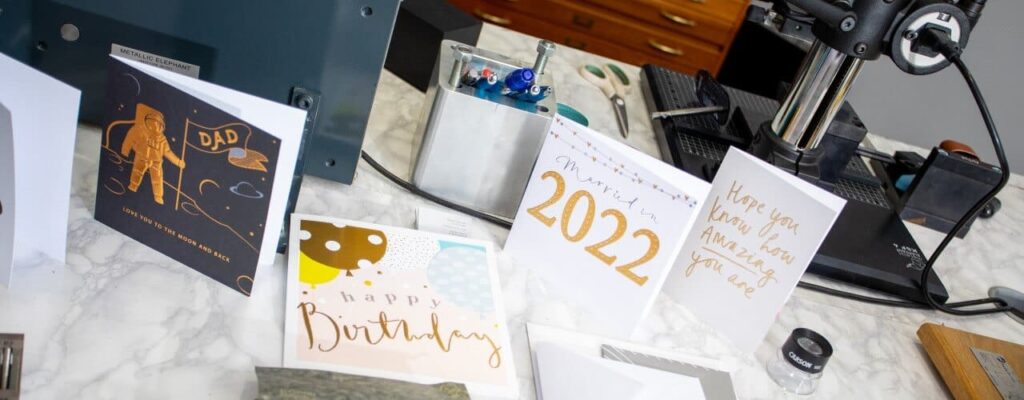

There’s no doubt that you will already have come across both embossing and debossing. If you’ve ever run your fingers over an invite that has a stylish raised design – or one that sits below the card, then you’ve encountered embossing and debossing. These print effects are incredibly popular as a way to make designs stand out and feel higher quality and more durable. But what are the key differences where embossing and debossing are concerned?
What is embossing?
It’s essentially a printing technique that is used to impress an image onto paper so that the design ends up sitting raised above the surface. In order to emboss, it’s necessary to have metal plates called dies that are etched with the design that you are looking to emboss. The process is very simple – the die is pressed into the paper like a stamp and when this happens, the design on the die ends up being pushed into a raised position on the other side with the aid of a second item, a counterforce. Embossing can be done in many different ways, including using different levels of embossing in the design and adding in a range of other elements, such as foil.
How does embossing work?
Dies are created – essentially, two plates that will sit on either side of the paper or card. Dies can be created by chemical etching or via the use of a CNC.
The paper or card is placed between the dies. When the image is being embossed then the die that will push the image upwards sits on the bottom and the counterforce is on top.
Heat and pressure are applied to the die so that a relief of the image is created in the paper or card and the embossing process is complete. Foil and multiple layers can be used to create a really distinctive design – or you can just opt for a non-foil finish.
What is debossing?
Debossing is the opposite of embossing. The design is imprinted onto the card or paper but to create a depressed effect, as opposed to a version of the design in relief. Like embossing, there are lots of extra details you can add to the debossing process to create your end result, including filling it with ink or foil. One reason to choose debossing over embossing might be that debossing doesn’t interfere with the back of the printed piece so you can use both sides.
How do embossing and debossing work best?
Here are our top tips: Choose whether you want to have your design depressed or in relief (the basic difference between embossing and debossing). Use simple artwork so that you’ll get an impactful result. If you’re going for multiple layers, then make sure the deepest ones are the largest parts of the design. It’s also a good idea to use heavier paper stock if possible.
Both debossing and embossing can make a huge difference to the quality and feel of your designs – which one is the best option is up to you. If you would like to explore this further, please reach out to the studio team at hello@hotfoil.co.uk where they can provide further expert advice on achieving the best results for your project.